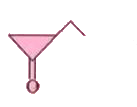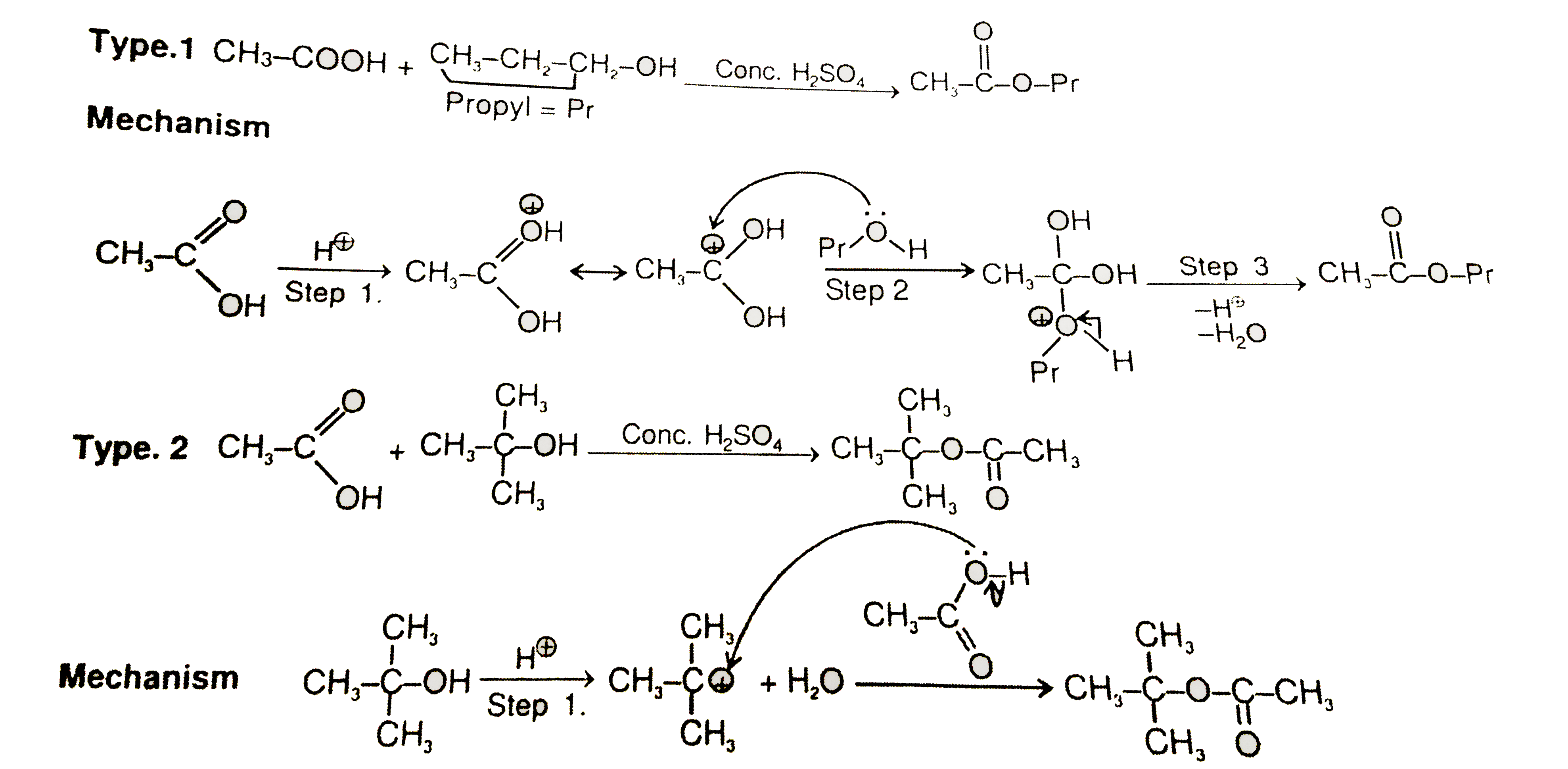In the above reaction compound X & Y respectively will be
The correct Answer is:C
To solve the given reaction step by step, let's analyze the transformation of formaldehyde (CH₂O) through the Grignard reagent (CHD₂MgI) and then through concentrated sulfuric acid.
Step 1: Reaction of Formaldehyde with Grignard Reagent
1. Identify the Reactants: The starting compound is formaldehyde (CH₂O) and the Grignard reagent is CHD₂MgI.
2. Nucleophilic Attack: The nucleophile (CHD₂⁻) from the Grignard reagent attacks the electrophilic carbon of the carbonyl group (C=O) in formaldehyde. This results in the breaking of the double bond and the formation of an alkoxide intermediate.
- Intermediate Structure: The structure after the nucleophilic attack will be:
- O⁻ (alkoxide) attached to the carbon, which is also attached to a hydrogen (H) and a CHD₂ group.
3. Formation of Alkoxide: The alkoxide (O⁻) will then react with the magnesium ion (MgI⁺) from the Grignard reagent, leading to the formation of:
- CH₂(OH)CHD₂MgI
Step 2: Protonation of the Alkoxide
1. Reaction with Acid: The alkoxide (CH₂(OH)CHD₂⁻) is then treated with H₃O⁺ (acid), which protonates the oxygen atom.
2. Final Product (X): After protonation, the product will be:
- CH₂(OH)CHD₂
- This compound is an alcohol where the OH group is attached to the carbon that was originally part of the carbonyl group of formaldehyde.
Step 3: Dehydration with Concentrated Sulfuric Acid
1. Reaction with Concentrated H₂SO₄: The alcohol (CH₂(OH)CHD₂) is treated with concentrated sulfuric acid (H₂SO₄) and heated. This is a dehydration reaction where water (H₂O) is eliminated.
2. Formation of Alkene (Y): The elimination of water leads to the formation of a double bond between the two carbon atoms:
- The resulting product will be:
- CH₂=CHD₂
- This compound is an alkene.
Summary of Products
- Compound X: CH₂(OH)CHD₂ (an alcohol)
- Compound Y: CH₂=CHD₂ (an alkene)
Final Answer
- The compounds X and Y are:
- X: CH₂(OH)CHD₂
- Y: CH₂=CHD₂
1. Identify the Reactants: The starting compound is formaldehyde (CH₂O) and the Grignard reagent is CHD₂MgI.
2. Nucleophilic Attack: The nucleophile (CHD₂⁻) from the Grignard reagent attacks the electrophilic carbon of the carbonyl group (C=O) in formaldehyde. This results in the breaking of the double bond and the formation of an alkoxide intermediate.
- Intermediate Structure: The structure after the nucleophilic attack will be:
- O⁻ (alkoxide) attached to the carbon, which is also attached to a hydrogen (H) and a CHD₂ group.
3. Formation of Alkoxide: The alkoxide (O⁻) will then react with the magnesium ion (MgI⁺) from the Grignard reagent, leading to the formation of:
- CH₂(OH)CHD₂MgI
1. Reaction with Acid: The alkoxide (CH₂(OH)CHD₂⁻) is then treated with H₃O⁺ (acid), which protonates the oxygen atom.
2. Final Product (X): After protonation, the product will be:
- CH₂(OH)CHD₂
- This compound is an alcohol where the OH group is attached to the carbon that was originally part of the carbonyl group of formaldehyde.
1. Reaction with Concentrated H₂SO₄: The alcohol (CH₂(OH)CHD₂) is treated with concentrated sulfuric acid (H₂SO₄) and heated. This is a dehydration reaction where water (H₂O) is eliminated.
2. Formation of Alkene (Y): The elimination of water leads to the formation of a double bond between the two carbon atoms:
- The resulting product will be:
- CH₂=CHD₂
- This compound is an alkene.
- Compound X: CH₂(OH)CHD₂ (an alcohol)
- Compound Y: CH₂=CHD₂ (an alkene)
- The compounds X and Y are:
- X: CH₂(OH)CHD₂
- Y: CH₂=CHD₂
Topper's Solved these Questions
- ORGANIC REACTION MECHANISMS-IVBOOK - RESONANCE ENGLISHCHAPTER - ORGANIC REACTION MECHANISMS-IVEXERCISE - APSP PART-2
17 Videos
- ORGANIC REACTION MECHANISMS - IIBOOK - RESONANCE ENGLISHCHAPTER - ORGANIC REACTION MECHANISMS - IIEXERCISE - APSP Part - 3
22 Videos
- PERIODIC TABLE & PERIODICITYBOOK - RESONANCE ENGLISHCHAPTER - PERIODIC TABLE & PERIODICITYEXERCISE - ORGANIC CHEMISTRY(BASIC CONCEPTS)
27 Videos
Similar Questions
Knowledge Check
Consider the following sequence of reaction.
ACH3MgBr−−−−−→H⊕3OBConc.H2SO4−−−−−−−→ΔCH2/Pt−−−→

Find structure of compound A:A B
B C
C D
D
Consider the following sequence of reaction.
ACH3MgBr−−−−−→H⊕3OBConc.H2SO4−−−−−−−→ΔCH2/Pt−−−→

Find structure of compound 'C':A B
B C
C D
D
Consider the following reaction sequence ,
CH3CH(OH)CH3ConcH2SO4−−−−−−−−→HeatXdil.H2SO4−−−−−−−−→H2OY
X and Y in the reaction respectively areACH3CH=CH2,CH3CH(OH)CH3BCH3CH=CHCH3,CH3CH2CH2OHCCH3CH2CH=CH2,CH3,CH2CH2OHDCH3CH2CH2CH3,CH3CH(OH)CH2CH3
CH3CH2OHConc.H2SO4−−−−−−−−−−→443KX+H2O
Complete the above reaction and explain the mechanism.
View SolutionConsider the following reaction CH3−CH2(A)−O−H+CH3−O∣∣C(B)−OH→CH3−O∣∣C−O−CH2−CH3+HOH In the above reaction ester formation takes place by
View SolutionCH3CH2COONH4P2O5−−→ΔXH+/H2O−−−−−→Y.
Y and X respectively are
View SolutionIn the series, C2H2NaNH2−−−−→2.0eq.XCH3I−−−→2.0eq.YHgSO4−−−−−−−→H2SO4,H2OZ the compound Z is :
View SolutionH214C=CH−CH3low conc of Br2−−−−−−−−−→or high temp (?)
Product of the above reaction is :
View Solution


